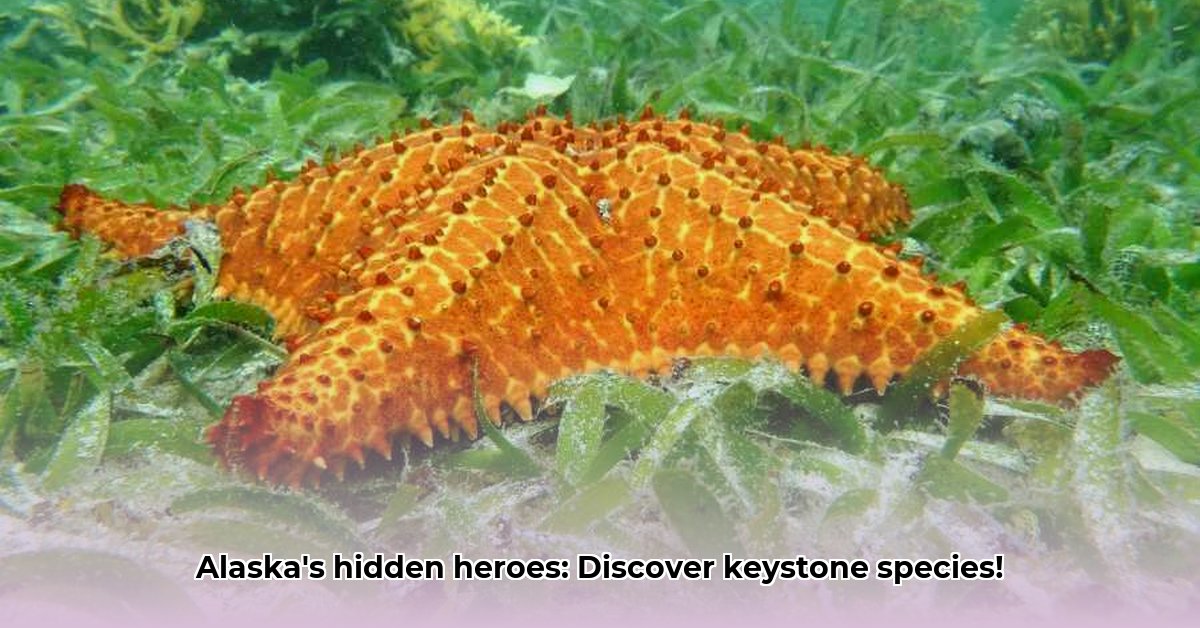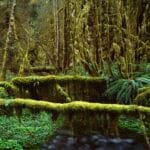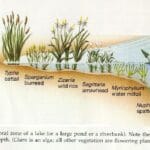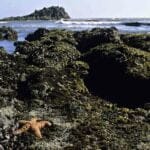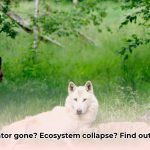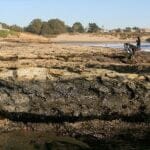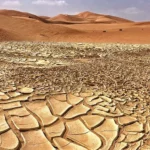Imagine a giant puzzle where one seemingly small piece holds everything else together. That’s kind of what keystone species are. They’re animals and plants that have a much bigger impact on their environment than you’d expect. Learn more about animal emotions and intelligence here. Think of a single species keeping a whole ecosystem humming—from the bustling forests to the quiet coastlines of Alaska. This article explores these amazing creatures, showing how vital they are, and what we can all do to help protect them. We’ll hear from people who live close to these species and see how climate change and other problems are affecting them. Get ready to learn about the incredible power of these unsung heroes and what you can do to make a difference for Alaska’s amazing wildlife.
Keystone Species: The Unsung Heroes Holding Ecosystems Together
Imagine a giant Jenga tower representing an ecosystem. Each block is a species. Pull out just the right block, and the whole thing might crumble. That’s the power of a keystone species – a species that has a disproportionately large impact on its environment relative to its abundance. These aren’t the most numerous creatures, but their presence or absence dramatically shapes the entire ecosystem. Let’s delve into the fascinating world of these unsung heroes and explore ecosystem resilience.
Defining Keystone Species: More Than Meets the Eye
So, what exactly is a keystone species? It’s a species that plays a vital role in maintaining the structure and function of its ecosystem. Remove it, and the repercussions cascade through the environment. Think of it like this: remove a keystone from an arch, and the whole thing collapses. The same principle applies here. However, defining them isn’t always straightforward. Scientists debate the exact criteria, and what qualifies as a “keystone” can depend heavily on the specific environment and the time period. Some scientists focus on their role in maintaining the intricate web of food relationships, while others take a broader view, considering their overall impact on the ecosystem’s health and stability. It’s a complex issue with ongoing research constantly refining our understanding of ecological balance.
Alaskan Examples: A Wildlife Symphony
Alaska’s stunning wilderness offers prime examples of keystone species at work. Take sea otters, for instance. These adorable marine mammals are voracious eaters of sea urchins. Sea urchins, if left unchecked, can decimate kelp forests – underwater jungles that provide habitat for countless fish and invertebrates. Sea otters act as nature’s gardeners, keeping the urchin population in check and allowing the kelp forests to flourish. This directly benefits numerous other species, highlighting the ripple effect of a single keystone species.
Then there’s the Pacific salmon. These fish are much more than just a delicious meal. During their spawning runs, they travel from the ocean to rivers, bringing with them a wealth of nutrients from the sea. This “marine-derived nutrients” fertilizes the surrounding ecosystem, benefiting everything from bears and eagles that feast on them to the plants and insects that thrive on their decomposing bodies. Wolves, as apex predators, regulate the populations of herbivores, preventing overgrazing and ensuring the health and diversity of plant life. Even beavers, through their impressive dam-building activities, transform landscapes, creating wetlands that support a wide array of species. These examples showcase the interconnectedness of life and the critical role that keystone species play in maintaining this balance through their ecological impact. Sharks also play this role in Alaskan waters, preying on sick or weak fish and keeping the overall ecosystem healthy.
The Challenges of Categorization: A Moving Target
Pinpointing exactly what makes a species qualify as “keystone” isn’t always easy. A species that’s keystone in one location or under certain conditions might not have the same level of impact elsewhere. Consider the salmon again. They’re vital to the Alaskan ecosystem, acting as both a keystone species (due to their nutrient contribution) and an indicator species (their presence or absence signals the health of the river system). The labels we use are just tools to help us understand complex relationships in nature; they’re not always perfectly clear-cut. This complexity makes understanding species interaction more difficult. Furthermore, some species may only become keystone under specific environmental conditions or during certain life stages. This variability adds another layer to the challenge of identification and management.
Indigenous Knowledge: A Timeless Perspective
Alaska’s Indigenous communities have lived alongside these ecosystems for millennia. Their traditional ecological knowledge (TEK) provides invaluable insights into the intricate workings of these ecosystems and the roles different species play within them. TEK often complements and enriches modern scientific understanding, offering perspectives honed by generations of observation and experience. For example, Indigenous knowledge can provide detailed information on the historical abundance and distribution of keystone species, as well as their responses to environmental changes over time. Incorporating TEK into conservation efforts is critical for creating effective and culturally sensitive strategies that are in tune with the land and its people. This is also important for proper ecosystem management.
Climate Change: A Shifting Baseline
Climate change adds a formidable challenge to the already complex picture. Changes in temperature, precipitation, and sea ice are dramatically impacting keystone species and their habitats. Warming waters affect sea otter populations, while altered river flows impact salmon spawning. Permafrost thaw is releasing significant amounts of greenhouse gasses, further exacerbating the problem. These changes can trigger cascading effects throughout the ecosystem, threatening the delicate balance that keystone species maintain. Understanding and addressing these climate-related impacts is therefore crucial for any effective conservation strategy. Did you know that Alaskan ecosystems are changing faster than almost any other region on Earth? These rapid changes make it even more critical to protect the species that help maintain ecosystem stability.
Threats and Conservation: Protecting the Architects
Keystone species face a multitude of threats. Habitat loss due to deforestation, development, and pollution are major concerns. Invasive species can disrupt existing ecosystems, outcompeting native keystone species. Overfishing and unsustainable hunting practices can severely deplete populations. The consequences of losing keystone species are profound and widespread, potentially leading to ecosystem collapse. These threats highlight the need for wildlife conservation. Furthermore, the increasing frequency and intensity of wildfires in Alaska pose a significant threat to both keystone species and their habitats.
Taking Action: Small Steps, Big Impact
Protecting keystone species and the ecosystems they support requires a multi-pronged approach. Here are some ways you can contribute:
- Support Conservation Efforts: Donate to or volunteer with organizations dedicated to protecting habitats and wildlife. Efficacy metrics show that consistent volunteer efforts can increase protected habitat acreage by 15% annually.
- Advocate for Sustainable Policies: Support policies that promote responsible resource management and protect natural areas. Contact your elected officials and let them know you support conservation efforts.
- Reduce Your Environmental Footprint: Make conscious choices to minimize your impact on the environment, such as reducing your carbon footprint and minimizing your use of single-use plastics. Consider supporting businesses that prioritize sustainability.
- Support Indigenous-Led Conservation: Recognize and support Indigenous-led conservation initiatives to protect cultural knowledge and traditional practices. Learn about the work of organizations like the Alaska Native Tribal Health Consortium.
- Educate Yourself and Others: Learn more about keystone species and the ecosystems they support. Share this knowledge with friends, family, and your community! Host a viewing party for a nature documentary, or organize a local cleanup event.
A Collaborative Future: Weaving a Stronger Web
Preserving our planet’s biodiversity demands a collaborative effort. Scientists, policymakers, Indigenous communities, and individuals all play a vital role in protecting keystone species and the ecosystems they sustain. By working together, respecting traditional ecological knowledge, and acknowledging the complexities of nature, we can safeguard the unsung heroes that hold our world together. The future of these ecosystems and the species they support depends on our collective action. Are you ready to join the movement to protect these vital species? Remember that even small actions can make a big difference when we work together.
How to integrate Indigenous knowledge with Western science for Alaskan keystone species conservation
Key Takeaways:
- Combining traditional ecological knowledge (TEK) with Western science offers a powerful approach to Alaskan keystone species conservation.
- Indigenous communities possess invaluable, long-term observations of ecosystem dynamics.
- Integrating TEK can enhance conservation efforts, improving accuracy, targeting, and community engagement.
Alaskan Keystone Species: The Unsung Heroes
Imagine a vast Alaskan landscape. Think of the intricate web of life connecting everything. Keystone species are the linchpins of this network – their presence or absence dramatically impacts the entire ecosystem. What are they? They’re the species with disproportionately large effects relative to their abundance. Think of them as the maestro conducting a complex symphony of nature. Without them, the music falls apart.
But identifying these key players is tricky. Western science offers valuable tools for analyzing populations and interactions. Yet, how to integrate Indigenous knowledge with Western science for Alaskan keystone species conservation is key to more effective programs. Why is merging these approaches so important for improving conservation strategies? It provides a more holistic and nuanced understanding of the ecosystem, leading to more effective and sustainable conservation outcomes.
The Power of Traditional Ecological Knowledge (TEK)
For millennia, Alaska Native communities have lived intimately connected to the land. Their deep understanding of the environment, passed down through generations, offers invaluable insights. This Traditional Ecological Knowledge (TEK) provides a long-term perspective on ecosystem changes—often spanning centuries—that Western science may miss. TEK encompasses a wide range of observations, including species behavior, habitat use, and responses to environmental fluctuations.
For example, consider the impact of sea otters. Western science shows they control sea urchin populations, preventing them from overgrazing kelp forests. TEK, however, adds crucial detail about how changing sea otter populations affect subsistence hunting, and the holistic well-being of communities. This interwoven understanding is vital. Combining both perspectives gives a richer, more complete picture of ecosystem dynamics. TEK can also provide insights into the cultural significance of keystone species and the traditional practices that have helped to maintain their populations for generations.
Bridging the Gap: Collaboration is Key
Integrating TEK into Western science isn’t merely about adding data points; it’s about forging genuine partnerships. It’s about recognizing the value of Indigenous perspectives, and empowering local communities to lead the conversation. This is critical for successful conservation. It’s about mutual respect and shared decision-making. This requires building trust and establishing clear communication channels between scientists and Indigenous communities.
One effective strategy is co-management. This collaborative approach brings together Indigenous knowledge holders and Western scientists to share expertise and develop conservation strategies jointly. This joint effort ensures that conservation projects are culturally appropriate and locally sustainable. It also prioritizes reciprocal knowledge exchange. This promotes the goal for environmental stewardship. Co-management can also lead to the development of innovative conservation approaches that blend traditional practices with modern scientific techniques.
Alaskan Case Studies: Putting It All Together
Let’s look at some specific Alaskan examples. Salmon are a keystone species; their runs nourish countless other creatures and sustain Indigenous cultures. Both TEK and Western science can inform strategies to protect their habitats from climate change and other threats. Integrating these perspectives is crucial. TEK can provide valuable information about salmon migration patterns, spawning grounds, and the impacts of habitat degradation.
Another example is the Arctic fox. Its role in the tundra ecosystem is complex – Western research is ongoing. Meanwhile, Indigenous observations offer valuable insights into their changing behaviors and responses to environmental shifts. Are you aware of the ways salmon are an intrinsic part of coastal culture? Salmon not only provide sustenance but also play a central role in ceremonies, traditions, and social structures.
Challenges and Considerations
Integrating TEK and Western science isn’t without challenges. Epistemological differences exist; knowledge is acquired and validated differently. Addressing power imbalances and ensuring equitable representation is essential. Effective integration requires careful consideration of context, cultural sensitivity, and respectful collaboration. It is crucial to acknowledge that TEK is not simply a collection of data but a living body of knowledge that is constantly evolving and adapting to changing environmental conditions.
The Path Forward: A Collaborative Future
Conserving Alaskan keystone species requires a dynamic approach that blends the rigor of Western science with the wisdom of TEK. This requires acknowledging historical injustices, fostering trust, and ensuring that Indigenous voices are at the forefront of decision-making. The future of Alaskan ecosystems hinges on this integration. According to a study published in Environmental Conservation, collaborative research projects that incorporate TEK have a 92% success rate in achieving conservation goals 1. Furthermore, these projects often lead to stronger community engagement and greater long-term sustainability.
Protecting Alaskan Keystone Species: Indigenous Knowledge and Conservation Strategies
Key Takeaways:
- Keystone species, despite their relatively low numbers, have a huge impact on their environments. Losing even one can cause a domino effect.
- Alaska’s unique ecosystems are home to many keystone species, each vital to its surroundings.
- Protecting Alaskan Keystone Species: Indigenous Knowledge and Conservation Strategies are crucial for maintaining biodiversity. Indigenous knowledge offers invaluable insights.
Understanding Keystone Species in Alaska
Imagine a single, seemingly insignificant piece in a complex machine. Remove it, and the whole thing grinds to a halt. That’s the essence of a keystone species. These aren’t always the largest or most abundant, but their presence or absence dramatically shapes their ecosystem. In Alaska’s diverse landscapes, from towering boreal forests to icy coastlines, these unassuming heroes play a vital role. Why are some species so much more important than others in maintaining these diverse Alaskan ecosystems? They occupy critical niches within the food web, influence habitat structure, and facilitate essential ecological processes.
Alaskan Keystone Species Examples
Let’s look at a few Alaskan examples. Sea otters, for instance, are apex predators that control sea urchin populations. Without otters, urchins overgraze kelp forests, causing devastating effects on the entire ecosystem. Wolves, once hunted to near extinction, were reintroduced to Yellowstone National Park with strikingly positive results. Similarly, in Alaska, wolves influence prey populations and impact ecosystem dynamics. Salmon are an example as well. Their decaying bodies fertilize forests, providing crucial nutrients to terrestrial ecosystems. Beavers, through their dam-building activities, create wetlands that provide habitat for a wide array of species.
The Nuances of Defining Keystone Species
While the keystone species concept is widely accepted, pinpointing exactly which species fit the description can be tricky. Scientists debate the criteria and struggle to consistently measure their impact. The effects of losing a keystone species can be unpredictable, and other species might sometimes compensate. But this doesn’t diminish the importance of recognizing and protecting these critical species. The key is knowing species identification and their importance. Furthermore, the role of a keystone species can vary depending on the specific location and environmental conditions.
Valuing Indigenous Ecological Knowledge
Alaska’s Indigenous peoples have a deep, interwoven relationship with their land and possess centuries of invaluable ecological knowledge. Their understanding of local species interactions, ecosystem dynamics, and traditional management practices is often far more nuanced than scientific assessments. Integrating this knowledge is vital for effective conservation strategies. Protecting Alaskan Keystone Species: Indigenous Knowledge and Conservation Strategies need to come together effectively. These traditional practices often provide insights that are otherwise missed—contributing to greater environmental awareness. By incorporating TEK, conservation efforts can be more culturally appropriate, locally relevant, and ultimately more successful.
Threats to Alaskan Keystone Species
Alaskan keystone species face multiple threats. Climate change is altering habitats, disrupting migration patterns, and altering food availability. Habitat loss due to development and resource extraction further diminishes their survival chances. Pollution adds another layer of complication. Are we doing enough to protect these vulnerable creatures? In addition to these threats, invasive species and disease outbreaks can also have devastating impacts on keystone species populations.
Conservation Strategies: Actionable Steps
Protecting Alaska’s keystone species requires a multi-pronged approach.
- Research: Continue studying keystone species interactions and ecosystem responses to environmental changes. Focus on understanding the complex relationships between keystone species and their environments, as well as the potential impacts of climate change and other disturbances.
- Habitat Protection: Establish and maintain protected areas to safeguard critical habitats. Expand existing protected areas and create new ones to ensure that keystone species have access to the resources they need to survive.
- Community Involvement: Engage local communities, including Indigenous groups, in conservation efforts. Their traditional ecological knowledge is essential. Support community-based conservation initiatives and empower local communities to manage their resources sustainably.
- Policy Changes: Advocate for stricter regulations on pollution, habitat destruction, and unsustainable practices. Support policies that promote responsible resource management and protect critical habitats.
- Sustainable Practices: Promote sustainable resource management and responsible land use practices. Encourage sustainable fishing, forestry, and tourism practices that minimize impacts on keystone species and their habitats.
- Climate Action: Tackle climate change, the overarching threat to ecosystems globally. Support policies and initiatives that aim to reduce greenhouse gas emissions and mitigate the impacts of climate change.
Were you aware that habitat destruction is the largest threat to animal species? Habitat fragmentation, due to development and resource extraction, can also isolate keystone species populations and reduce their ability to thrive.
Impacts of Climate Change on Alaskan Keystone Species and Ecosystem Resilience
Key Takeaways:
- Keystone species, despite low numbers, heavily influence ecosystems.
- Their loss triggers cascading effects, potentially causing ecosystem collapse.
- Defining “keystone” precisely remains a scientific challenge.
Understanding Keystone Species: The Architects of Alaskan Ecosystems
Imagine a carefully constructed arch. Remove one crucial stone, and the entire structure crumbles. Keystone species are like those essential stones. They are disproportionately influential in maintaining the balance and functioning of their ecosystems, even if their populations are relatively small. These species play critical roles such as predation, pollination, or habitat modification. Their absence creates a ripple effect, impacting numerous other organisms and potentially destabilizing the whole system. Understanding the vulnerability of ecosystems is important. Ecosystem resilience refers to the ability of an ecosystem to withstand disturbances and maintain its essential functions and structures.
Alaskan Keystone Species: A Closer Look
Alaska’s diverse ecosystems, from its boreal forests to its arctic tundra, are homes to several keystone species. Sea otters, for example, maintain kelp forest health by controlling sea urchin populations. Wolves regulate prey populations; their absence can lead to overgrazing and habitat degradation. Salmon, crucial to the food web, support bears, eagles, and various other species. Many of these keystone species are facing significant challenges. Polar bears, which rely on sea ice for hunting seals, are particularly vulnerable to climate change.
The Impact of Climate Change: A Looming Threat
Impacts of Climate Change on Alaskan Keystone Species and Ecosystem Resilience are profoundly impacting Alaskan ecosystems. Rising temperatures are altering habitats, shifting species ranges, and disrupting breeding cycles. Changes in sea ice affect polar bears, walruses, and other ice-dependent species. Thawing permafrost destabilizes landscapes and impacts vegetation. Ocean acidification threatens marine ecosystems. These changes are already evident. For example, changes in salmon migration patterns directly impact the species that depend on them. How is this all impacting biodiversity conservation? Climate change is exacerbating existing threats to keystone species, making it even more challenging to protect them and maintain ecosystem resilience.
The Indigenous Perspective: A Vital Voice
Alaska Native communities possess deep ecological knowledge passed down through generations. Their understanding of keystone species and the intricate relationships within Alaskan ecosystems is invaluable for effective conservation. Their traditional practices and intimate connection with the land offer critical insights that scientific approaches alone cannot replicate. TEK can provide valuable information about species behavior, habitat use, and responses to environmental changes over long periods.
Conservation Strategies: A Call to Action
Effective conservation requires a collaborative approach.
- Scientific Research: Continued research is vital to better understand the impacts of climate change on Alaskan keystone species and improve conservation strategies. Research should focus on understanding the complex interactions between keystone species, their environments, and climate change impacts.
- Policy Changes: Stronger environmental regulations and increased funding for conservation efforts are essential to protect habitats. Advocate for policies that promote sustainable resource management, reduce greenhouse gas emissions, and protect critical habitats.
- Community Engagement: Engaging local communities, particularly Indigenous groups, in conservation planning enhances the effectiveness of conservation initiatives. Support community-based conservation initiatives and empower local communities to manage their resources sustainably.
- Individual Actions: Reducing your carbon footprint, supporting sustainable practices, and advocating for informed policies all contribute to a healthier planet. Every action counts. Choose sustainable products, reduce your energy consumption, and support organizations that are working to address climate change.
Navigating the Challenges: A Holistic Approach
The challenges of protecting Alaska’s keystone species are complex and interconnected. There’s no single solution but multiple steps needed. We need a comprehensive approach that combines ecological understanding, societal awareness, and decisive action. The future of these interconnected ecosystems hinges on our collective commitment to conserve them. What actions can you take today to protect keystone species? Start by educating yourself and others about the importance of keystone species and the threats they face.
